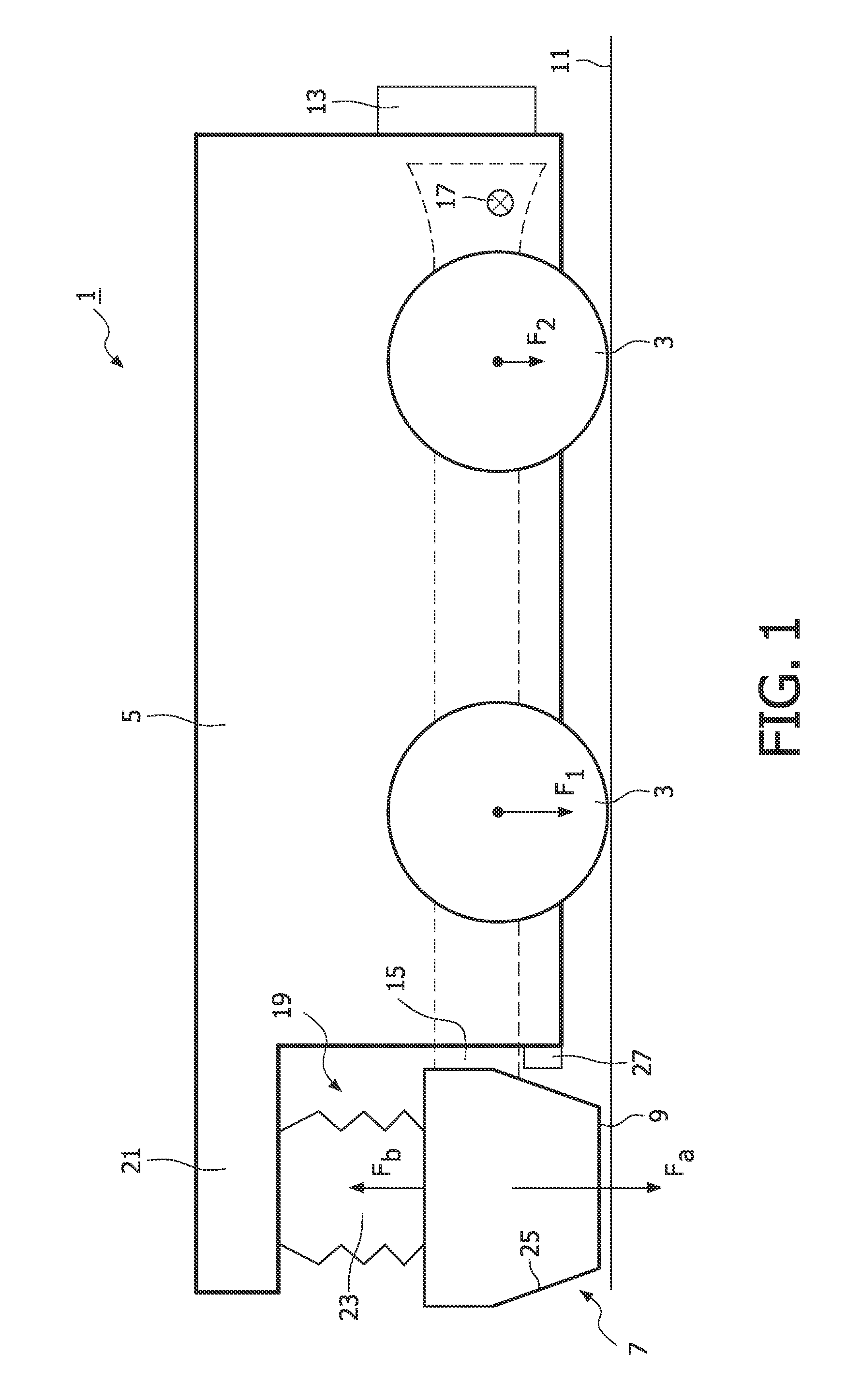Suction unit and autonomous vacuum cleaner
a vacuum cleaner and suction unit technology, applied in the direction of vacuum cleaners, mechanical suction control, cleaning equipment, etc., can solve the problems of increasing the normal force acting on the nozzle, increasing the underpressure in the interior space,
- Summary
- Abstract
- Description
- Claims
- Application Information
AI Technical Summary
Benefits of technology
Problems solved by technology
Method used
Image
Examples
Embodiment Construction
[0020]FIG. 1 shows a suction unit 1 according to a preferred embodiment of the present invention. The suction unit has a drive system that comprises wheels. In this embodiment two sets of wheels 3 are provided on each side. The wheels on either side can be separately operated in order to turn the suction unit. Two electromotors, one on each side, are provided to drive the wheels. Preferable each wheel on the chassis is driven by the motor. Preferably a set of gears (not shown) are interposed between the wheels and an electromotor. The wheels are carried by a chassis 5. Several other parts are also mounted to the chassis.
[0021]At a front part of the chassis a nozzle 7 is provided. The nozzle has an interior space defining an opening 9 facing the surface to be treated 11 when the suction unit is operational. The interior space communicates with an outlet 13, while at another side it results in the opening 9. The outlet 13 is meant to communicate with suction means or a fan unit when t...
PUM
 Login to View More
Login to View More Abstract
Description
Claims
Application Information
 Login to View More
Login to View More - R&D
- Intellectual Property
- Life Sciences
- Materials
- Tech Scout
- Unparalleled Data Quality
- Higher Quality Content
- 60% Fewer Hallucinations
Browse by: Latest US Patents, China's latest patents, Technical Efficacy Thesaurus, Application Domain, Technology Topic, Popular Technical Reports.
© 2025 PatSnap. All rights reserved.Legal|Privacy policy|Modern Slavery Act Transparency Statement|Sitemap|About US| Contact US: help@patsnap.com



